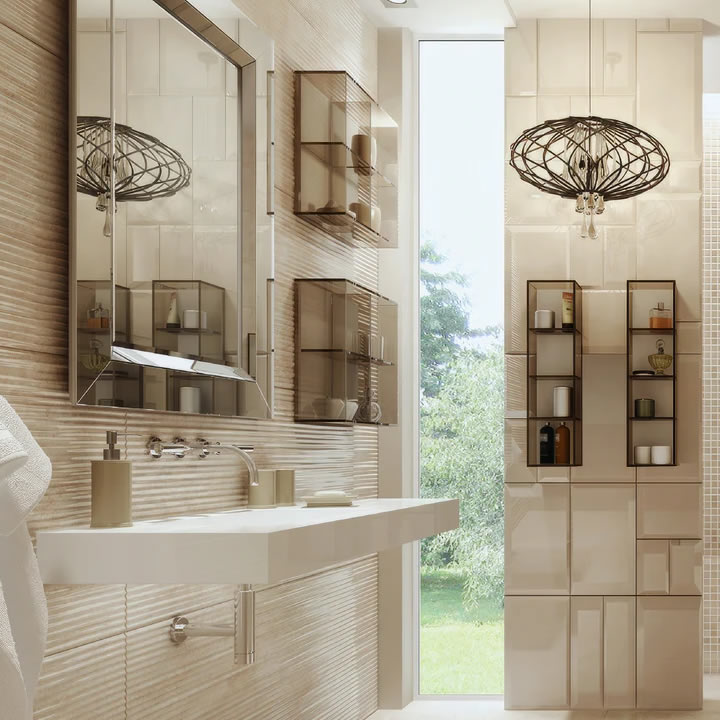Ceramic tiles are like little wonders that bring beauty and functionality to spaces. They are versatile and durable and come in various styles, making them a top choice for floors, walls, and even artistic creations.
Let’s delve into the world of ceramic tiles and uncover their wonders.
What are Ceramic Tiles?
Ceramic tiles are thin slabs made from clay and other natural materials, hardened by firing them in a kiln. They come in various shapes, sizes, colors, and textures. The most common types are glazed and unglazed ceramic tiles.
The Making of Ceramic Tiles
- Material Preparation: The process starts by blending different types of clay and minerals to achieve the desired characteristics. This mixture is then shaped into tiles.
- Shaping: Tiles can be formed in various ways, like pressing, extruding, or molding. This step determines the size and shape of the final tile.
- Firing: Tiles are fired in kilns at high temperatures, solidifying their structure and making them durable.
- Glazing (for glazed tiles): A liquid glass-like coating, called glaze, is applied to the surface of the tile. This adds color, texture, and protection.
Types of Ceramic Tiles
- Glazed Ceramic Tiles: These have a protective layer of glaze on the surface, making them resistant to stains and moisture. They come in various finishes like matte, glossy, or textured.
- Unglazed Ceramic Tiles: These tiles don’t have a glaze coating, making them more slip-resistant. They are suitable for high-traffic areas.
- Porcelain Tiles: A subtype of ceramic tiles, porcelain tiles are made from finer clays and fired at higher temperatures, making them denser and less porous than regular ceramic tiles. They’re highly durable and ideal for both indoor and outdoor use.
Advantages of Ceramic Tiles
- Durability: Ceramic tiles are tough and resistant to scratches, moisture, and stains, making them perfect for high-traffic areas.
- Versatility: They come in various colors, shapes, and textures, allowing for endless design possibilities.
- Low Maintenance: With simple cleaning routines, ceramic tiles can retain their beauty for years.
- Affordability: Compared to other flooring options, ceramic tiles are relatively cost-effective.
Applications of Ceramic Tiles
- Flooring: They are commonly used in kitchens, bathrooms, hallways, and living areas due to their durability and easy maintenance.
- Wall Coverings: Ceramic tiles make stunning backsplashes, accent walls, and decorative elements in homes and commercial spaces.
- Art and Design: Artists and designers often use ceramic tiles for mosaics, sculptures, and various artistic expressions due to their versatility.
Maintenance and Care
- Regular Cleaning: Sweep or vacuum regularly and mop with a mild detergent to maintain the ceramic tiles’ shine.
- Grout Maintenance: Ensure proper sealing of grout lines to prevent staining and mildew buildup.
- Avoid Harsh Chemicals: Use gentle cleaning solutions to preserve the glaze and appearance of the tiles.
Conclusion
Ceramic tiles are not just practical; they’re a canvas for creativity and a testament to craftsmanship.
Their durability, versatility, and aesthetic appeal make them a popular choice for homeowners and designers worldwide. With proper care, they can adorn spaces and stand the test of time, showcasing their beauty for years to come.
You can visit this tile store for more information.

